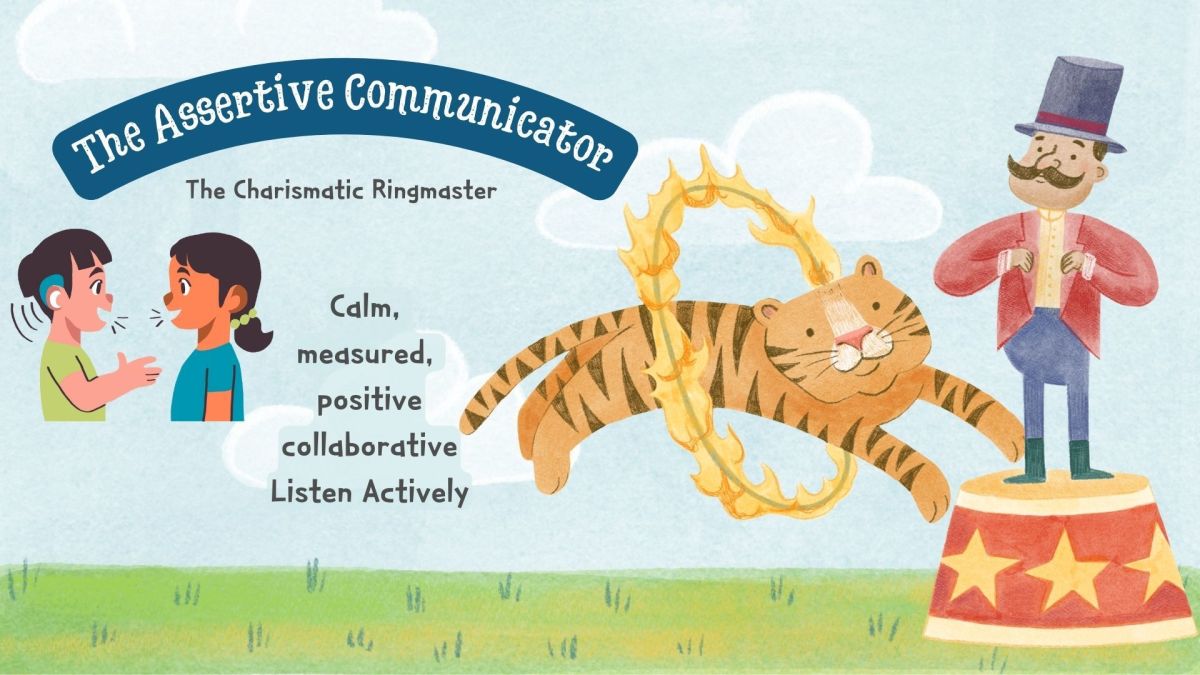Effective Communication Requires Binocular Vision
“How to Improve your Marriage without Talking about it,” by Pat Love and Steve Stosny is a very insightful book. Though it often references marriage when discussing the communication break-downs it tries to solve, all of the information is applicable to most relationships.
The background information about how males and females communicate and the principles for how to effectively dialogue in a respectful and productive manner are applicable to every conversation we have.

Each day, you might communicate with a family member, a friend, a significant other, a co-worker, and/or one of your children.
Understanding where their perspectives originate from can greatly improve your ability to communicate effectively.
Developing compassion for their perspective can help you to create an atmosphere that encourages productive dialogue.
Conducting yourself in a manner that is true to your values can only serve to improve your own self-value and result in a willingness to value other people, too.
Understanding communication and practicing the strategies offered in this book will (hopefully) encourage your co-communicator to act in kind.
Monocular Vision
In biology, monocular vision is seeing through only one eye. In communication, monocular vision refers to an inability to include another person’s perspective – it’s a mentality that basically implies “that being right is more important to you” than the person you are communicating with. Subconsciously, humans choose monocular communication because we feel as though validating another’s perspective requires us to give up part of our own perspective. It feels like a concession.
The truth is, no one can take anything away from your perspective. Others’ opinions only add dimensions to your perspective “which can bring richness and color to the way you paint your world canvas.” (Page 126)
The Biology of our Vision
Starting on page 128, the book gives really great information on how the human brain easily gets trapped in monocular vision based our experiences. It is all very intriguing and nearly impossible for me to summarize. I highly recommend purchasing the book so you can read pages 128-132.
In order for you to understand the benefits of binocular vision, I need you to know this:
Neurotransmitters in your brain make associations based on your ideas, behaviors, feelings, memories, knowledge and experiences. These associations become knee-jerk reactions. In other words, “Monocular vision is shaped by your past. When all you see is your point of view, it certainly will be contaminated by your prior experiences and thereby limit future growth.” (Page 129)
“Once an association is made, it not only increases the probability that you will make the same association but also decreases the probability that you will see it any other way…When you are wired to see negative, you will see negative.”
The authors call this confirmation bias.
I have actually had this happen to me. It was one of the many situations recently that had me banging my head against a wall. This person is trapped in a rigid monocular vision regarding Christianity that made me seem like the enemy to be defeated rather than someone to dialogue with and learn from.
Binocular Vision
“With monocular vision you will be inclined to see what you have already seen, hear what you have already heard, and feel what you have already felt.
“The advanced relationship skill of binocular vision is the artful ability to see your partner’s perspective as well as your own.” (Page 123 and 124) Separate but equal perspectives form a kind of duet – like violin and cello playing harmony.
Mastering binocular vision entails focusing on their feelings rather than the facts, developing compassion and giving importance to their feelings that stem from the facts.
So often, my husband and I have NOT done this. I tell him how a situation made me feel and he responds, “But that is not what happened.” He argues about the facts, ignoring my feelings. I am left offended, because my feelings do not matter. Really, so many “discussions” could end quickly if his initial response was, “Oh! I am sorry that that situation made you feel like that."
Binocular vision takes in new information, which makes it possible for you to see your partner more or less objectively, integrating his or her positive and negative characteristics.
But more than that, binocular vision includes seeing your own behavior objectively – and gives you a taste of what it is like living with you. Developing binocular vision takes a great deal of maturity because it requires getting out of the mental ruts we’ve formed and seeing the world through your partner’s eyes as well as your own.” (Page 134)
Rewiring Your Brain
Monocular vision can be trained to become binocular vision.
- Understand the signals of anxiety, fear and shame. Literally, step into their shoes and listen to yourself. Would your words make you feel fear or shame?
- Associate the benefit of the doubt with discomfort and pain. When you feel pain, think “We will work it out.” Giving your partner the benefit of the doubt could prevent a lot of unnecessary communication breakdowns.
- Associate a positive image of your co-communicator with your distress and pain. CHOOSE to see this person as someone who has the best of intentions but sometimes makes mistakes.
- Consider your perspective only half of the picture. Consider your perspective incomplete – lacking enough data to come to a proper conclusion – until you hear the other’s perspective.
Retraining your brain to think positively opens your heart, mind and ears to receiving new information. When you are rewired to see positive, you will see positive.
Self-Value
The final piece of binocular vision is self-value. We must each understand that our value as a person is much too important to be diminished by others. We need an internal mechanism to raise our self-value when it drops abruptly based on a situation or circumstance or communication break-down.
Some ideas:
- Think about the most important things about you as a person
- Feel the love you have for the most important people in your life
- Feel your spiritual connection
- Imagine something you think is beautiful in nature, your favorite work of art or music
- Tap into your sense of friendship or community
- Boost yourself up by remembering compassionate things you have done.
When we raise our self-value, communication becomes about behavior requests, not about your value as a person. When we are no longer feeling undervalued or like our value is under attack, the emotional intensity vanishes. “When we can hold on to self-value in the face of disappointment, we see ourselves and our loved ones in a much more positive light that naturally rewires our brain circuits for binocular vision.” (page 141)
Binocular vision allows us to hold on to self-value and our value of loved ones in the face of disappointment.
Recognizing triggers of fear and/or shame, focusing on your core values, developing compassion and binocular vision are the four most important factors in creating an environment that fosters effective communication.
Understanding where their perspectives originate from can greatly improve your ability to communicate effectively.
- Improve Your Communication WITHOUT Talking
So often in my marriage, I bring a relationship issue to the table, and when it's all said and done, both my husband and I feel worse.
Conducting yourself in a manner that is true to your values can only serve to improve your own self-value and result in a willingness to value other people, too
- Improve. Appreciate. Connect. Protect. Ideas for Better Communication
Start improving your marriage by focusing less on your partners mistakes and more on your responses to those mistakes.
Developing compassion for their perspective can help you to create an atmosphere that encourages productive dialogue.
- Effective Communication Requires Compassion - Part III in a Series
We can help people we care about manage their vulnerabilities rather than use them as weapons for our personal gain.









